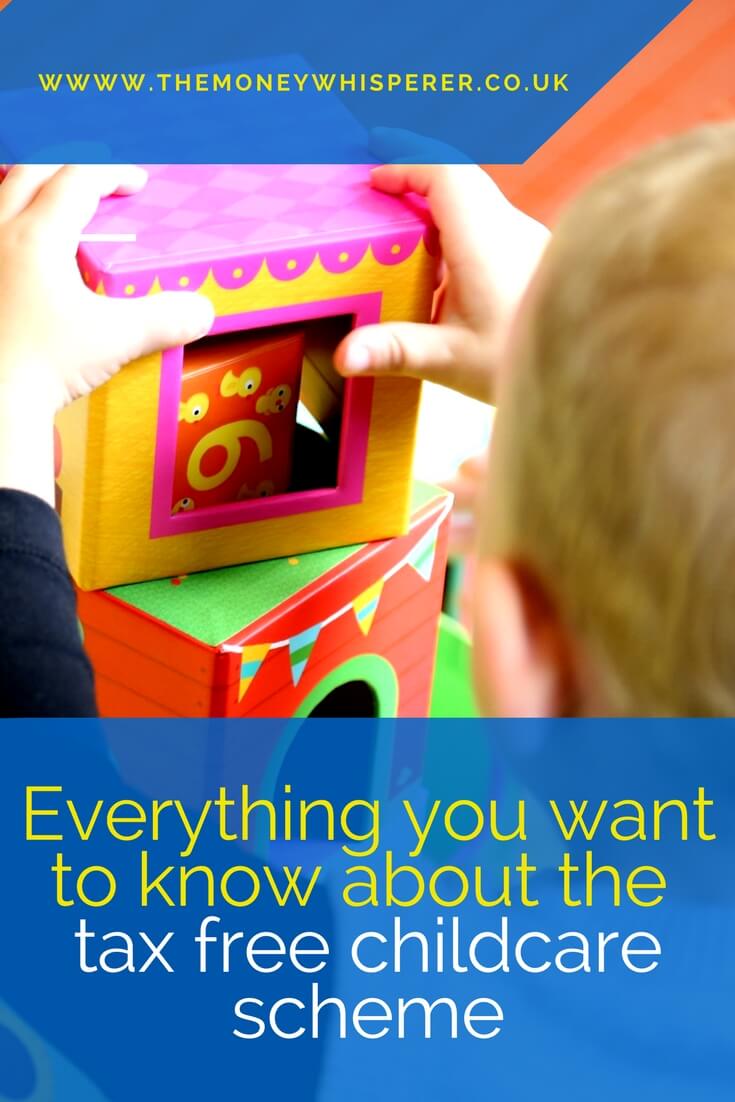This post may contain affiliate links which means that if you click through to a product or service and then buy it, I receive a small commission. There is no additional charge to you.
Childcare isn’t cheap. End of.
Working parents know the pain of forking out a huge amount of their take home salary on nursery fees, or childminders for wrap-around school care, or school holiday activity clubs.
Good news is here though – more financial assistance is available for the vast majority of working parents, including the self-employed for the first time. Hoorah!
What is available for me?
What is the criteria for childcare help? When can I apply for free childcare? Does free childcare affect tax credits? So many questions…
Working in the early years and education sectors I’ve seen the range of financial support available to all parents, but also the confusion among parents as to what exactly is relevant to them. And it can be confusing, I will readily admit it!
You can use the simple calculator here to tell you exactly what is relevant to you based on your circumstances.
It takes no more than 5 minutes, I promise!
Tax-free childcare scheme
The Tax-Free Childcare Scheme, launched in April 2017, is relevant for almost all families where both parents work. To qualify:
- Your child or children need to be under 12 (or under 17 if disabled); and
- Both parents will have to each earn at least £120 per week (equivalent to 16 hours at the National Living Wage), but no more than £100,000 each per year (combined income in excess of £100,000 is fine). Single parents have to meet the same earnings criteria.
Here’s how Tax-Free Childcare works
Any eligible working family can use the Tax-Free Childcare scheme – it doesn’t rely on employers offering it. This is really great news for the self-employed and will open up financial support to a lot of families who haven’t previously had access to childcare vouchers (which are now no longer available to new applicants since October 2018).
The Childcare Choices website is where you start the application.
Once you have received your email confirming that you can sign up, you can then go to the following website to complete your application and open an online account to pay for registered childcare here.
Parents will be able to view accounts for all of their children at once on one online account. Once you are signed up, you’ll need to re-confirm your circumstances every 3 months using a simple online process.
What it means for you
- Here’s the best bit – the government will give you a ‘free’ 20% extra on top of whatever you pay in to your account; for every £8 you pay in to your account, the government will add an extra £2. The government top-up is given on the same day as you make your deposit which is great!
- In total, you’ll be able to use this new scheme to pay for childcare of up to £10,000 PER CHILD, EACH YEAR so you can receive up to £2,000 per child, or £4,000 if disabled, per year ‘free’.
- You can pay money into your childcare account whenever you like. You don’t need to make regular payments although if you do and your monthly childcare costs aren’t consistent, you can build up a balance in your account to use at times when you need more childcare than usual, for example, over the summer holidays.
- Also, grandparents, other family members or employers can pay in to your account, not just parents; this is another huge benefit compared to the previous scheme.

Childcare voucher vs tax-free childcare
The scheme will run in parallel with the childcare voucher scheme (although this closed to new applicants from October 2018). If you’re already signed up for childcare vouchers through your employer, you can continue to use these, although you won’t be able to take advantage of both; you will need to choose which one is most advantageous to you.
For anyone who is in the fortunate position to be able to choose between Tax-Free Childcare and childcare vouchers, consider carefully how much you can benefit from each scheme in a year and compare this to your annual childcare costs to see which is going to be best for you to opt for.
Beware if you currently receive tax credits
If you apply for a tax-free childcare account, you will automatically have your tax credits cancelled when you submit the application for the account.
You can not claim tax credits and have a tax-free childcare account. It’s one or the other. Please make sure you know which leaves you better off if you are currently on tax credits before you make an application for tax-free childcare.
Where to use your Tax-Free Childcare account
The really important message here is that you can use the money in your online account to pay for ANY OFSTED registered childcare. This includes:
- Registered childminders, nurseries and nannies
- Registered after-school clubs and playschemes
- Registered schools, including private schools
- Home careworkers working for a registered home care agency
The people I have found that are most informed about this scheme are those with nursery and pre-school aged children. But you can benefit from the scheme if you have children up to the age of 12. In particular the following groups could benefit:
Parents of school-age children who use after-school or holiday clubs or childminders: Research the clubs and childminders near you to check if they are OFSTED registered. If they are, you can pay for your child’s place there with the money in your Tax-Free Childcare account, saving yourself 25% of the cost of the fees.
Parents with children at private schools: As long as the school is registered and invoices show out-of-hours care separately, you will be able to use Tax-Free Childcare to pay towards your invoice.
Two million households will be eligible for the Tax-Free Childcare scheme – are you one of them? If you are and have children of pre-school age, you may also be eligible for the 30 hours of funded childcare,



How is it a fair scheme when you have had and been paid for looking after a child since they were a baby and then you are told that you could loose them because you are a member of the family . This is ging to put a lot of families at odds with each other and is going to have a huge impact on the children that that this system is supposed to be supporting